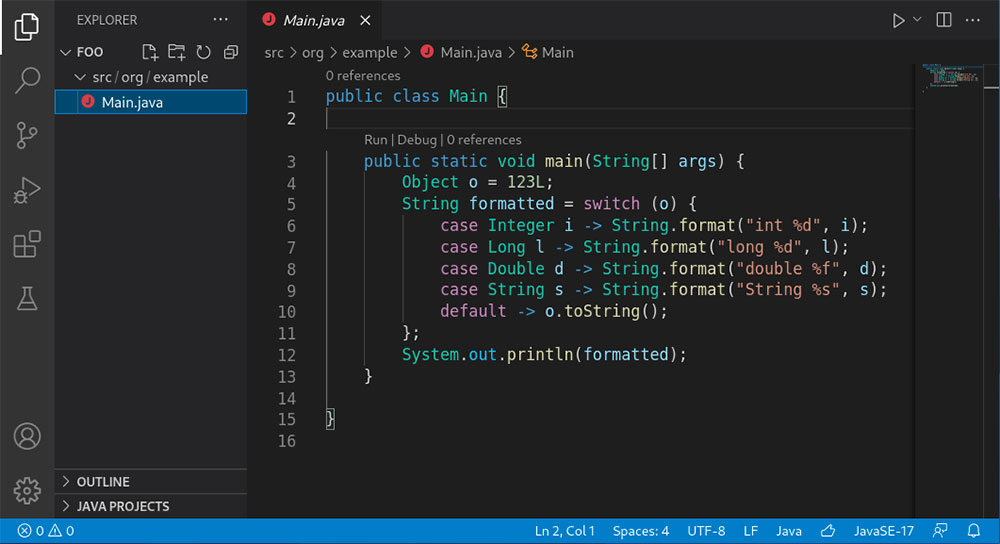Streamline Microservices: Top Java Frameworks Reviewed
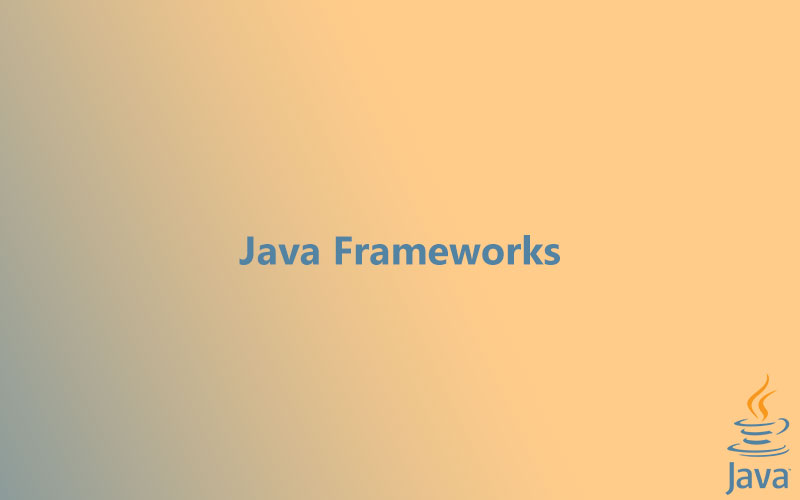
In a digital tapestry where each thread intricately connects to create robust applications, Java microservices frameworks have emerged as the powerhouse for developers seeking agility and resilience in their creations.
Picture this: your monolithic masterpiece, split into a consortium of nimble operatives, each microservice an autonomous agent of functionality, collaborating in a cohesive ecosystem that is as dynamic as the market demands.
This article unfolds the blueprint to navigate the microservices labyrinth. With each paragraph, I’ll shepherd you through the realms of Spring Boot, dive into the Kubernetes orchestrated depths, and unveil secrets of crafting fault-tolerant systems with Circuit Breaker patterns.
By the final dot, expect mastery—not just knowing, but grasping—the architectures that hypnotize the Java landscape. From the whisper-soft nuances of service discovery to the assertive commands of API gateways, this journey is as much about the ‘how’ as it is about the ‘why.’
- Discover: Unravel the world of microservice architecture.
- Implement: Tactics for Java microservice libraries.
- Deploy: The art of microservices deployment.
- Secure: Fortifying your Java microservices.
Embark on this expedition and transform how you perceive, create, and evolve software.
Java Microservices Frameworks
| Framework | Language | Main Use-case | Strengths | Considerations |
|---|---|---|---|---|
| Spring Security | Java | Security | Comprehensive security features for authentication and authorization; tight integration with the Spring ecosystem | Can be complex to configure; steep learning curve |
| Eclipse Jersey | Java | RESTful APIs | Official reference implementation for JAX-RS; smooth integration with Java EE | Focused on RESTful services; may require additional dependencies for full-stack development |
| JHipster | Java | Full-stack applications | Generates project scaffolding; integrates front-end and back-end; offers DevOps tools | Generates a lot of code; best for starting new projects rather than integrating into existing ones |
| Apache Shiro | Java | Security | Simple API for authentication, authorization, session, and caching; lightweight | Lesser known compared to Spring Security, may have a smaller community and fewer resources |
| Play Framework | Java/Scala | Web applications | Asynchronous processing; MVC architecture; Good for scalable and reactive web applications | Learning curve if new to Scala; configuration and deployment convention might be different from typical Java tools |
Express.js
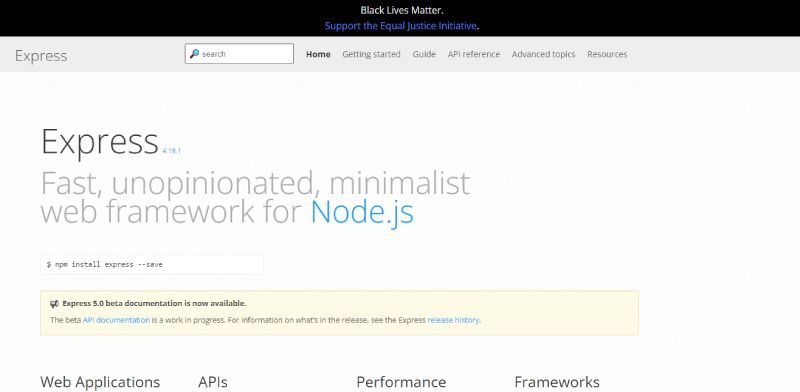
Less is more; this is the gospel Express.js preaches. It’s a beautifully minimalist framework for Node.js, perfect for crafting web applications and APIs with finesse and speed. Swerving around complexity, it accelerates back-end development with a performance-first ethos, ensuring the fast delivery of services.
Best Features
- Rapid server-side programming
- Middleware support
- Robust routing
- High performance
What we like about it:
Its middleware stacking is the precision-cut gem in Express.js’s crown, offering layered customization options like onions—peel back as many as you need.
Laravel
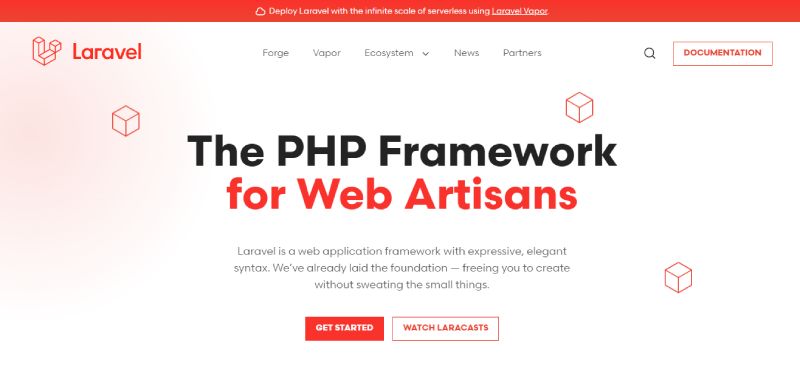
With a wand’s flick, Laravel conjures an experience that turns the labor of web development into a work of art. Known as the PHP web artisan’s framework, its elegant syntax spells efficiency, security, and scalability into the build of web applications, making each keystroke count.
Best Features
- MVC architectural pattern
- Object-Relational Mapping (ORM)
- Authentication and Authorization systems
- Artisan console
What we like about it:
Its ORM, Eloquent, behaves like a charming conversationalist, turning complex database communications into eloquently simple expressions.
Spring Security
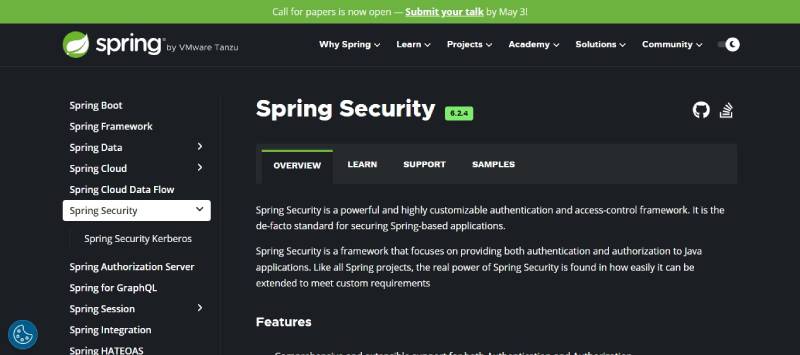
A bastion against the exploits and vulnerabilities of the web, Spring Security stands guard. In the realm of Java microservices frameworks, it overlays Spring applications with a shield so impenetrable it almost whispers “none shall pass” at each unauthorized request.
Best Features
- Comprehensive and extensible support for authentication
- Protection against attacks
- Customizable to granular levels
- Annotation-based security
What we like about it:
Its defense against CSRF is more a fortress than a feature, ensuring the sanctity of each session remains unblemished by forgery’s mark.
Eclipse Jersey
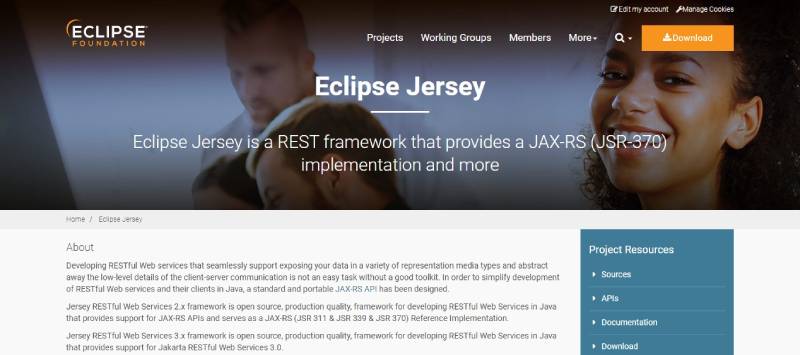
Eclipse Jersey, the revered scribe of RESTful services, translates the conversation between Java and the web into RESTful designs. This framework flourishes under the banner of simplicity, as it eases the creation of distributed systems through a fluent API, nurturing a scalable ecosystem of services.
Best Features
- JAX-RS API compliance
- Client API
- WebSockets support
- Pluggable components
What we like about it:
The Client API stands proud, turning service interactions, usually as daunting as deciphering runes, into a straightforward endeavor.
Django
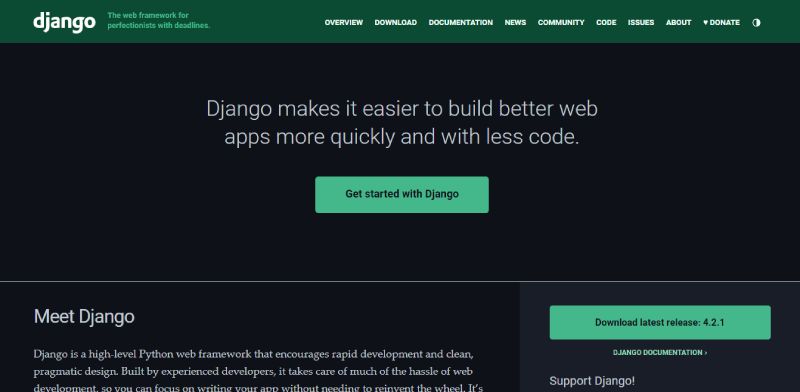
Django struts in with a “can-do-it-all” badge, and for good cause. It offers a high-level Pythonic path to swiftly design secure and maintainable web applications. From the ashes of repetitive code rises Don’t Repeat Yourself (DRY), the principle Django adamantly embraces, saving developers from monotonous redundancy.
Best Features
- Ridiculously fast development
- Secure by design
- Scalable and versatile
- Robust documentation
What we like about it:
Its built-in admin interface is no less than alchemy, spinning tedious database-driven tasks into gold with only a few lines of code.
FastAPI
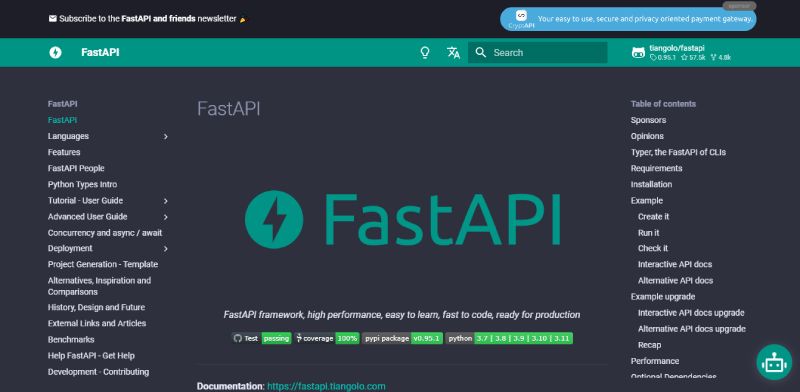
Emblazoned with swiftness in its DNA, FastAPI leaps forward to sculpt APIs with a pace that almost breaches time. The Python framework shines, harnessing asynchronous support and typing prowess through Pydantic, to deliver performant and type-safe APIs that race through lanes of data transport.
Best Features
- ASGI for asynchronous request handling
- Automatic data validation
- Generous annotations
- Swagger for API documentation
What we like about it:
Swagger integration—those words sing. They allow building a documentation hub that seems to narrate an API’s capabilities in real-time.
JHipster

JHipster pulls no punches. It’s a development platform deploying microservices architecture with Java and Spring Boot lineage, accentuated by modern front-end tech. It’s a workhorse, a generator, maybe even a tag team of microservice and front-end champions wrestling complexity to the ground.
Best Features
- Yeoman generator
- Application monitoring with JHipster Console
- Microservices marketplace
- Docker and Kubernetes integration
What we like about it:
Its ability to scaffold a project in minutes is akin to finding a speed potion hidden within your developer toolkit, wholly transformative.
Ruby on Rails
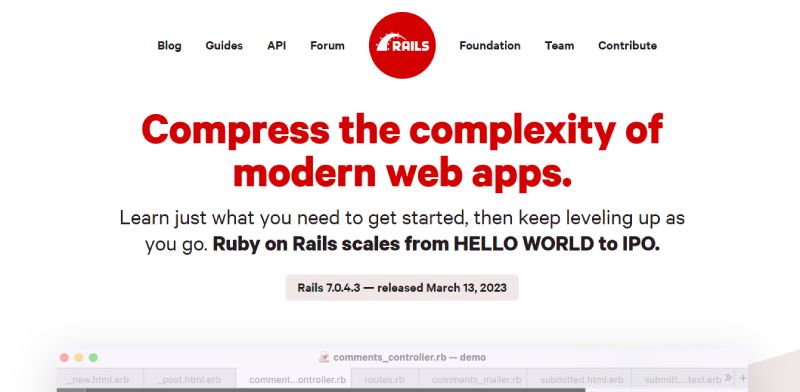
Ruby on Rails enters the scene with an aura of grace. The superstar framework, with Ruby’s poetic syntax at its core, has a “convention over configuration” philosophy that simplifies coding for the web. It is seen as an architect for rapid application development, seasoned and generous in its offerings.
Best Features
- Convention over configuration
- Seamless database table creations
- Vast library of gems
- Integrated testing suite
What we like about it:
The “gems” sparkle the brightest. These modules, countless in number, extend functionalities, transforming lines of potential into executed reality with minimal fuss.
Apache Shiro
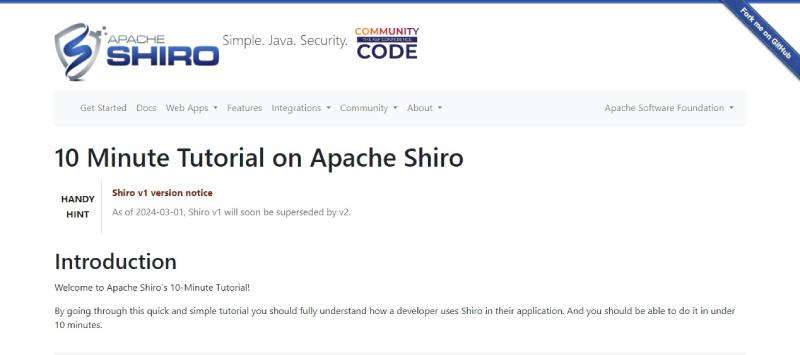
As a sanctum of security within Java’s sphere, Apache Shiro stands watch. It’s a powerful security framework that’s versatile enough to protect stand-alone applications, in full vigor alongside cloud-native applications, and in step within the corporate giants of the enterprise world.
Best Features
- Authentication and authorization
- Session management
- Cryptography
- Caching for state management
What we like about it:
Its finely tuned authorization abilities enforce permissions with the subtlety of a maestro’s baton, dictating who can do what with precise strokes.
Play Framework
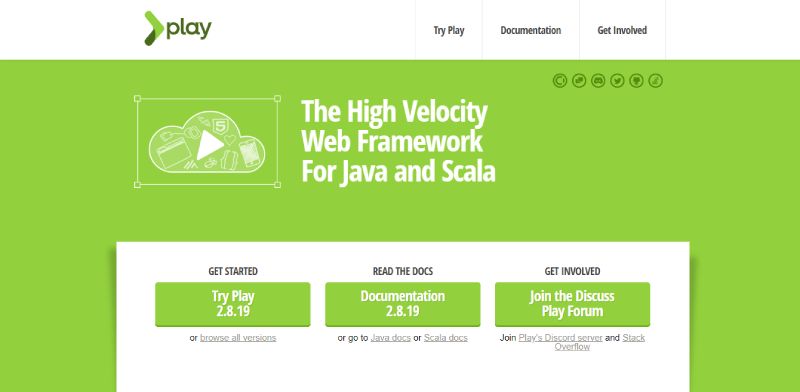
Hit ‘Play’ and watch the action unfold. The Play Framework cues up high-velocity development of web-friendly applications with an eminent Scala and Java cast. With its immutable HTTP objects and stateless nature, it curates reactive applications primed for the scalability in Java demands of today and beyond.
Best Features
- Asynchronous processing
- Stateless web tier
- Hot code reloading
- Robust asset compiler
What we like about it:
Hot code reloading is the showstopper, vanquishing wait times. Modify the code, and—like a snap—view the changes without the tiresome cycle of redeployment.
FAQ On Java Microservices Frameworks
What exactly are Java microservices frameworks?
Microservices frameworks in the Java ecosystem act as structured platforms offering the tools, protocols, and APIs to build and manage services that carry out a plethora of small, interconnected tasks.
These nimble operatives champion resilience and flexibility, propelling modular and distributed application development.
How does Spring Boot facilitate microservice architecture?
Spring Boot, the trailblazer in Java’s microservice odyssey, extrapolates boilerplate code, granting developers a streamlined avenue to erect microservices.
Auto configuration and standalone deployment features meld into the swift and efficient production of microservices, where each service is a beacon of self-sufficiency.
Why are containerization platforms like Docker important for microservices?
Containerization, the cornerstone of microservice deployment, encapsulates the environment, ensuring uniform functionality across various domains.
Tools like Docker sculpt isolated, replicable units from microservices, expediting deployments, scaling, and the metamorphosis of a tangled codebase into a symphony of lightweight containers.
Can microservices and monolithic architectures be mixed?
Certainly. While purists might raise eyebrows, the pragmatic melding of monoliths with microservices is feasible.
This hybrid, often a step in transformational evolution, heralds the gentle integration of microservices, providing a normalized transition pace aligned with business strategy and current system tenacity.
What role does an API Gateway play in microservices?
Imagine a maestro governing the traffic of requests; that’s the API Gateway in the microservices concerto.
This pivotal entity efficaciously directs incoming requests to appropriate microservices, further weaving in critical functionalities like authentication heartbeat into one, unified access point for consumer-centric interactions.
How do microservices communicate with each other?
Microservices whisper in patterns like REST or messages over Apache Kafka, passing JSON or XML parcels to engage in dialogue.
This communication tapestry ensures microservices, scattered across diverse ecosystems, persist in a coherent, interdependent narrative of data exchange and transactional choreography.
What is service discovery in the context of microservices?
Service discovery is your library index in the dynamic manuscript of microservices, an enabler for them to locate and interact with each other amidst the ever-changing landscape of service deployments, ensuring that a call to a colleague never rings into the void.
How is fault tolerance managed in microservices?
Through patterns like the Circuit Breaker, fault tolerance becomes a defensive strategy, safeguarding the system from cascading failures.
Should a microservice stagger, the circuit ‘breaks,’ and the distress is contained, preserving the sanctity of the operational chorus, until recovery or remediation is pursued.
Are microservices suited for all types of applications?
Not invariably. Some narratives are best told in one breath; thus, microservices are not a panacea. Microservices glitter in complex systems craving scalability and flexibility but might be overkill for simpler, less fragmented tales. Discernment of the application’s plot and future arcs guides this choice.
What are the best practices for testing Java microservices?
Java microservices require testing methodologies that mirror their distributed nature—unit testing to scrutinize each microservice in solitude, integration testing to ensure the sections of the tapestry meld without fraying, and contract testing to validate the protocols and expectations between these services. That’s the triad leading to assured quality.
Conclusion
As the digital canvas folds upon itself, the conversation invariably circles back to Java microservices frameworks, where the brushstrokes of innovation reshape the landscape of application development. The journey’s been enlightening, dissecting the very sinews that make distributed systems not only feasible but scalable—vehicle and destination becoming one.
- Spring Boot’s ease elevated the approachable,
- Micronaut’s grace lent performance without heft,
- Kubernetes orchestrated an ensemble like no other.
Dive, we did, into the pools of resilient architecture, feeling the undercurrents of Java microservice security and emerging with fortified insights. We navigated microservices deployment, balancing on the beam of continuous integration. And through the realms of event-driven landscapes, we rounded the path of Java Microservice Best Practices.
So let there be no more whispers in darkened server rooms. These frameworks are beacons, lighting the thoroughfare to tomorrow’s systems—modular, pliable, evocative. Surging forth, empowered, enlightened, ready to claim the dawn.
If you liked this article about Java microservices frameworks, you should check out these articles also:
- 11 Apps Like Brigit For Your Financial Needs
- Apps That Pay Instantly To Cash App
- Apps Like Cash App To Transfer Money Easily
- The Difference Between Methods and Functions in JavaScript - June 24, 2024
- Sing Along: Karaoke and Music Apps Like Smule - June 23, 2024
- How to Optimize JavaScript Function Call Performance - June 23, 2024







